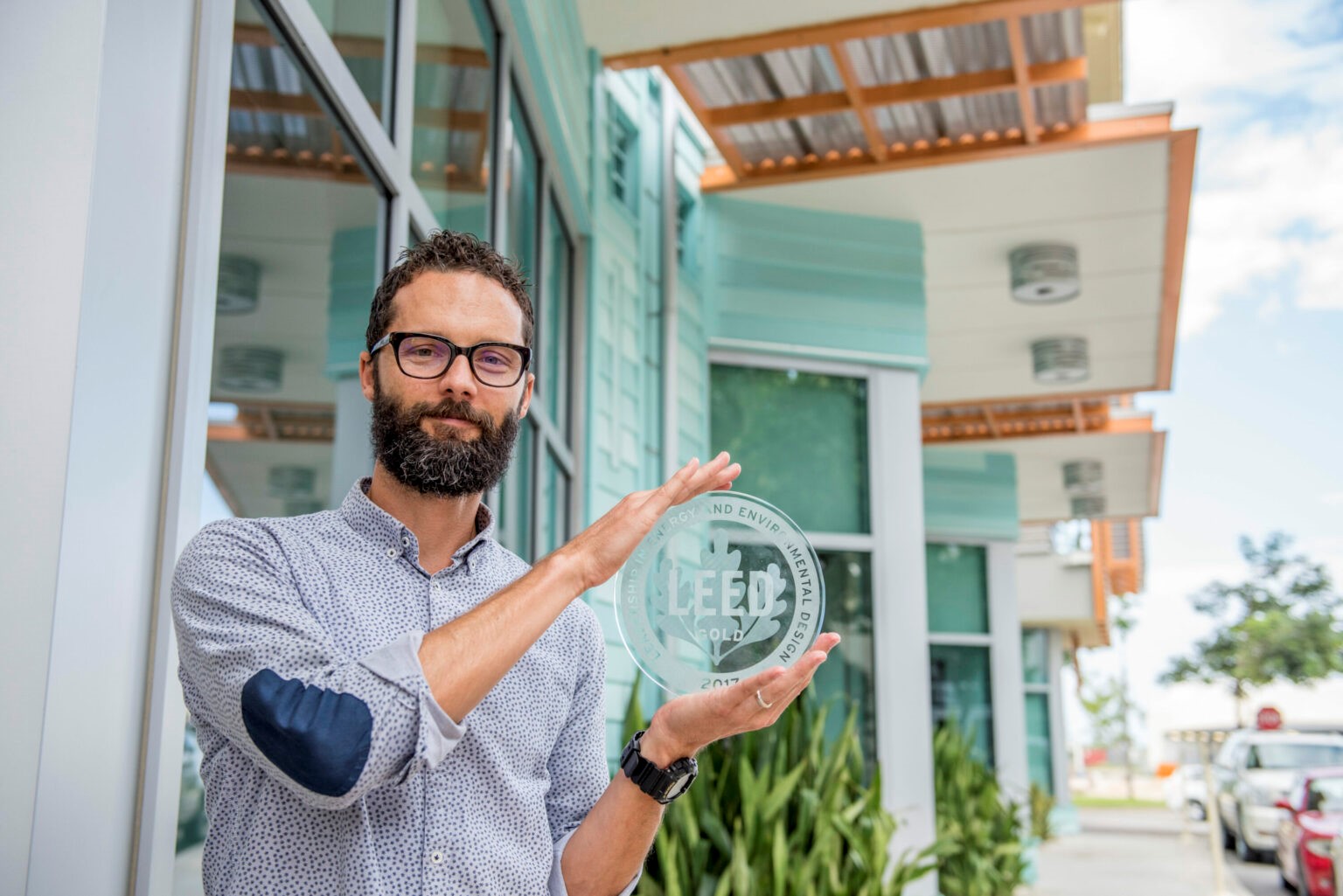
By Natasha Valerio
Walking through Camana Bay, visitors are often struck by how seamlessly the natural and built environs of the Town Centre interact with each other. This is by design: as Dart’s flagship development, Camana Bay embodies the organisation’s approach to sustainable development, balancing environment, economy and society to create places that enrich lives today and for future generations.
As such, for several of our past and future projects, we have been designing and building projects to LEED® certification standards. LEED stands for Leadership in Energy and Environmental Design and is the most widely used certification programme that recognises buildings that are efficient, cost-effective and environmentally friendly.
Ross Tibbetts, design manager at Decco, answered a few questions to help explain what it means for a building to be LEED certified and the importance of designing and constructing environmentally friendly and economically sustainable buildings.
Why is LEED important in the construction and design world?
LEED is a guide to environmentally friendly, economically sustainable and mentally and physically healthy design. LEED educates people on what truly sustainable design is. LEED also creates a platform where projects are recognised in a standardised way for their efforts toward sustainability.
How many properties does Dart have that are built to LEED standards?
Dart currently has two properties that are LEED certified: 18 Forum Lane is LEED Gold certified, and Kimpton Seafire Resort + Spa and The Residences at Seafire are LEED Silver certified. There are two projects that we have built or are building to LEED standards: One Nexus Way, which is complete, and 60 Nexus Way, which is currently under construction.
What factors are most important to consider when designing a building to LEED standards?
The LEED rating system is split into several categories, covering areas such as water efficiency, sustainable sites, indoor environmental quality, materials and resources, and so on.
There is also an “innovation” category that awards points for sustainable strategies beyond the scope of the LEED rating system.
I think the choice of site is the most important. If your site is in a walkable environment with good access to public transport, then your building is in a good position to be considered sustainable. However, when you have limits to choosing the site, then I think the next most important factor is the overall geometry of your building and how it is positioned on your site. This is called Passive Design, which is a building that is designed in reaction to the sun’s angles and wind, or other site-specific factors.
A good example of Passive Design is a building that is positioned in such a way that it reduces energy consumption and greenhouse gas emissions. For example, if you design a building and position it where large glass windows face the setting sun, this will increase the heat inside of the building. As a result, the electricity produced will emit large amounts of carbon dioxide and this contributes to global warming. It is important to position glass windows and walls in a sustainable way.
What is your favourite part about working on the LEED projects you have been a part of?
It feels right to work on a LEED project. It takes many people to get a LEED-certified building across the finish line. It’s inspiring to have a team of so many people that are working toward not just another building, but something special that will hopefully help to reverse the effects of global warming, improve people’s health and mental well-being, and educate people about sustainability over time. I think it gives you a sense that you’re doing the right thing. It’s like saving the whales – but for architects!
Do you think that LEED is here to stay as the future of design globally and for Dart’s current and future projects?
I think so. The LEED system is dynamic and changes with time and technology. I think that is LEED’s strong point.
I guarantee that LEED will be revising for a post COVID-19 version. I don’t know another system which encompasses sustainability from all aspects. Dart is looking at LEED for its newest office building currently under construction, 60 Nexus Way, so the commitment is there.
To Learn More About Working In The Cayman Islands And Office Spaces Available, Contact Leasing@Camanabay.Com.
About the author
Natasha Valerio is a Senior Marketing Communications Coordinator supporting the marketing team of the business development and real estate division at Dart. Natasha holds a BA in Communication Arts and has worked in Camana Bay since 2010. Born and raised in the Cayman Islands, Natasha loves the mermaid life – fitting, given that she is the team’s ‘Disney princess!’ Some of Natasha’s experience with Dart includes working on the opening of The Residences at Seafire, Dart’s first for-sale resort-residential property.
In other news